2023 BMW I7 Hands-On Preview: 5 Stand-Out Features of the EV Limo

BMW’s new flagship is a tech wünderkind. Here’s what stands out most.
By now, you’ve surely seen all the details of the 2023 BMW 7 Series, and its all-electric i7 model. (If not, find ’em right here.) It’s a cutting-edge car, packing tons of tech and luxury trappings in an avant garde slab of a sedan.
SEE ALSO: 2023 BMW 7 Series and i7 Bring Tons of Tech and Divisive Looks to BMW FlagshipThe i7 in particular is the most interesting part of the launch lineup. Instead of building a wholly separate EV model like Mercedes-Benz did with the EQS, BMW has made the i7 a battery-powered mirror of the gas-engined 7, with all the same available options and—in Canada—even the same starting price. It’s a bold move, Cotton.
AutoGuide was lucky enough to be on the scene at the global 7 Series reveal in New York last week. We poked around the new i7 as well as a 760i model, taking in every seat in the high-end cabin. There’s so much to see and do in the latest BMW flagship that we only scratched the surface. Nonetheless, ahead of driving the i7 for ourselves later this year, here are five of the features that stood out the most in our initial hands-on experience.
Theater Mode
Forget drive-in movies; let’s just hop into the i7. The available 31.3-inch ultra-wide Theater Screen is suitably named: it silently folds down from the headliner as the side and rear sunshades move into place, and the rear seat ambient lighting dims. A unique sound from composer Hans Zimmer accompanies the roll-out.
The 8K screen allows backseat passengers to watch movies or shows in 16:9, 21:9, and 32:9 aspect ratios. It’s super-crisp, but more impressive than the resolution is the contrast, with deep blacks and bright whites. There’s total Amazon Fire TV integration as well, though BMW says users can also pick from other apps too, and there are input ports on the backside of the screen.
Paired with the optional, 36-speaker Bowers & Wilkins Diamond Surround Sound System, which includes headrest-mounted speakers as well as “rumblers” built into the backrests, the i7’s Theater Screen is at least as good as the local multiplex. Just without the sticky floors.
Rear seat controls
Making it clear the i7 is as much about being driven as driving, the second row features a pair of 5.5-inch touchscreens built into the outboard armrests. A simplified control menu allows backseaters to control the Theater Screen if it’s equipped, if they’d rather not smudge up that pretty screen. Beyond that, passengers can also adjust the audio, climate, and ambient lighting settings from the phone-sized screen—four-zone climate control is standard, after all.
We used the panels at the launch event, and while response times are slightly tardier than those of the main infotainment screen, they’re more than acceptable. Migrating the controls to the outer armrests is one of those “why didn’t we think of that before” moves, making a lot of sense and adding to the sense of occasion for rear-seat riders. Pair that with the (optional) super-comfy cashmere seating surfaces, reclining right-side seat (up to 42.5 degrees, with built-in legrest), and that pretty glass roof, and it’s clear the rear row is the place to be in the new i7.
SEE ALSO: 2021 Mercedes-Benz S580 Review: Flagship Sets the BarPower doors
The flush exterior door handles of the i7 hide another (optional) new trick: automated opening and closing. At the press of a button, the front and rear doors glide open. Once inside, people can press the button on the door panel or the Interaction Bar to softly close the doors. An integrated servo keeps the doors light and easy to close if you need to do it with your own efforts.
BMW has also added a Safe Exit feature. Utilizing a dozen ultrasound sensors along the sides of the i7, the system uses audible as well as visual ambient lighting cues to alert passengers if a car, cyclist, or pedestrian is approaching. It even stops the door from opening until the hazard has passed.
SEE ALSO: 2022 BMW iX xDrive50 Review: Flagship For a New EraThose looks
Look, we can’t not talk about that face. Even last week’s reveal of the refreshed X7, which carries a similarly bifurcated visage, couldn’t quite prepare us for it.
Here’s the good news: like the big-grilled M4 did a year ago, the new 7 works better in person than in pictures. The 7’s nose-mounted waffle-maker is even larger here, with a light-up perimeter to boot. On either side is a pair of lighting elements: thinner units up top housing daytime running lights (DRLs) and turn signals, with larger lower items for main beams. The “flame surfacing” of the old Bangle era is now fully gone, with minimal creasing along the flanks to emphasize the sheer size of the i7. While the front fascia is quite busy, the i7’s rear treatment is clean and restrained. Both debut models roll on optional 21-inch wheels, which are big enough to not get lost under all this car, yet not cartoonishly large.
The four-square stance and bluff nose give the i7 serious presence, with more than a hint of Rolls-Royce about its upright stature. It’s not pretty, especially with the available M Sport package adding a black trim moustache around the lower lights and grille. To these eyes, it’s the optional Swarovski crystals in the “eyebrows” that throw the look off. They’re so bright, even when off, that they read as the main headlights, relegating the darkened lower units to under-eye bags, like the big Bimmer hasn’t slept in weeks. But, uh, that’s just one writer’s opinion.
It’s about choice
As mentioned above, BMW is taking a different approach with its full-size electric sedan. Mercedes made the EQS quite different from the regular S-Class, for instance. The two don’t even share a platform. On one hand, that makes BMW’s method seem conservative, hedging its EV bets with proven ICE tech. Listen to BMW chairman Oliver Zipse, however, and it’s not about playing it safe—it’s about giving buyers options.
The versatility of the 7 Series platform, offering up pure ICE, diesel, plug-in hybrid, and full electric powertrains depending on market, allows BMW to tailor the offerings for over 140 markets, explains Zipse. The point here is refreshingly simple: if buyers want an EV 7 Series, then they buy an i7. The EQS, as impressive as it is, isn’t an electric S-Class; it’s its own beast, a slightly smaller package with an entirely different design language.
So much more
A few hours with a static 2023 BMW i7 could only tell us so much. There’s tons of other technology to explore in the big EV limo. Much of it is contingent on actually driving the thing: the standard air suspension tuning, the multiple drive modes, the rear-wheel steering, the raft of driver assists—all of them are only paragraphs in a monster press release right now. We’re also curious about the modified charging curve, which BMW promises is more consistent in its kW intake, making for shorter overall charge times.
It shouldn’t be too long now. BMW dealerships will begin seeing the 2023 i7 and 7 Series in the fourth quarter of this year; we’re hoping to drive the i7 before that. On this first impression, the all-electric Bavarian limo seems more than up to the task of out-luxing the likes of the EQS and Lucid Air, divisive styling and all. We can’t wait to see what it’s like from behind the wheel—and from that reclined rear seat.
Become an AutoGuide insider. Get the latest from the automotive world first by subscribing to our newsletter here.

Kyle began his automotive obsession before he even started school, courtesy of a remote control Porsche and various LEGO sets. He later studied advertising and graphic design at Humber College, which led him to writing about cars (both real and digital). He is now a proud member of the Automobile Journalists Association of Canada (AJAC), where he was the Journalist of the Year runner-up for 2021.
More by Kyle Patrick



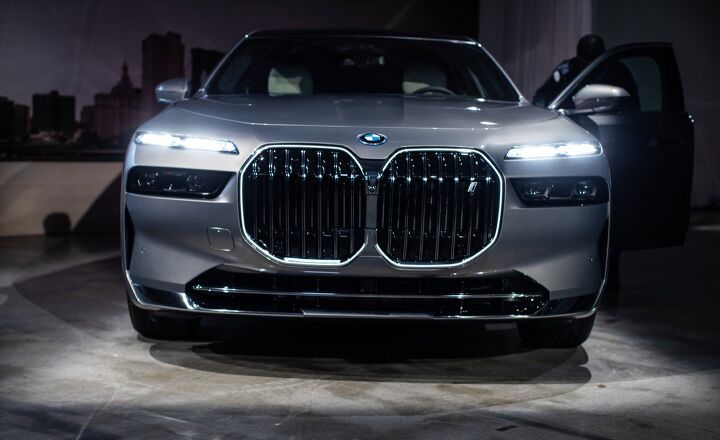
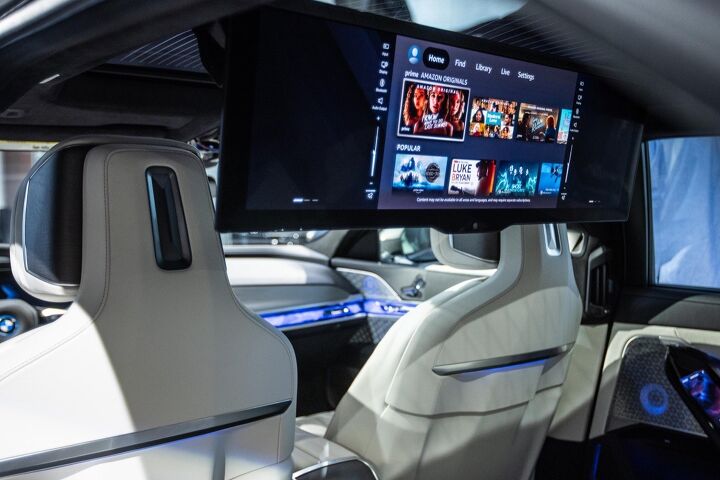


















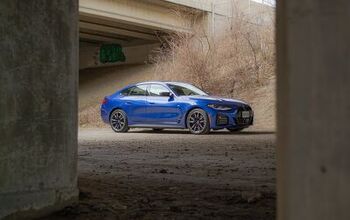


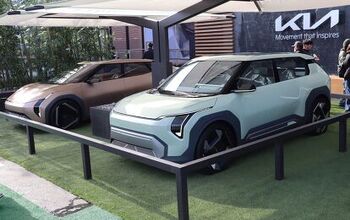
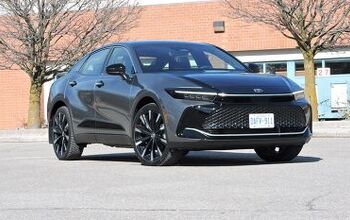



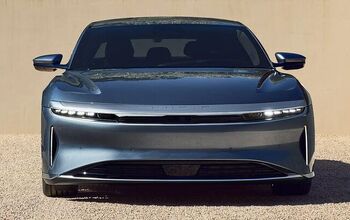
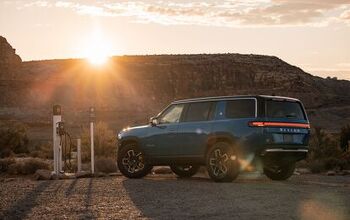
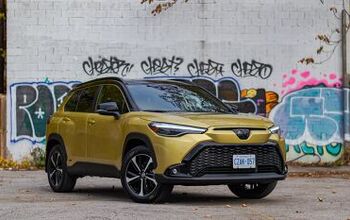
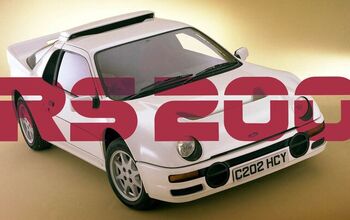



Comments
Join the conversation